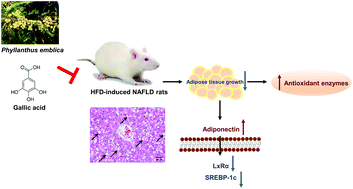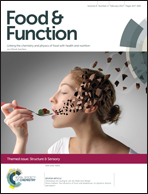The hepatoprotective effect of Phyllanthus emblica L. fruit on high fat diet-induced non-alcoholic fatty liver disease (NAFLD) in SD rats
Abstract
Non-alcoholic fatty liver disease (NAFLD), the most common chronic liver disease, is closely associated with metabolic syndrome and refers to the accumulation of hepatic steatosis not due to excess alcohol consumption. Phyllanthus emblica L. is a rich source of gallic acid and many known medicinally phytochemicals such as tannins, lignans, flavonoids, alkaloids, vitamin C, mucic acid, and ellagic acid. Our previous study has revealed that P. emblica exhibits inhibitory effects on hepatic steatosis and liver fibrosis in vitro, as well as gallic acid improves high fat diet (HFD)-induced dyslipidaemia, hepatosteatosis, and oxidative stress in vivo. Therefore, the aim of this study was to investigate the hepatoprotective effect of the water extract of P. emblica L. fruit (WEPE) on NAFLD in an animal model. The results showed that WEPE could significantly decrease body weight, peritoneal fat and epididymal fat, enhance the antioxidant enzyme activities, and improve steatosis through elevating adiponectin in adipocytes and PPAR-α in the liver as well as lowering SREBP-1c in the liver of rats fed with a high fat diet (HFD). This might be an explanation for the hepatic fat deposition-lowering effect of WEPE. These results demonstrate that WEPE could be beneficial for the amelioration of HFD-induced steatosis.



 Please wait while we load your content...
Please wait while we load your content...